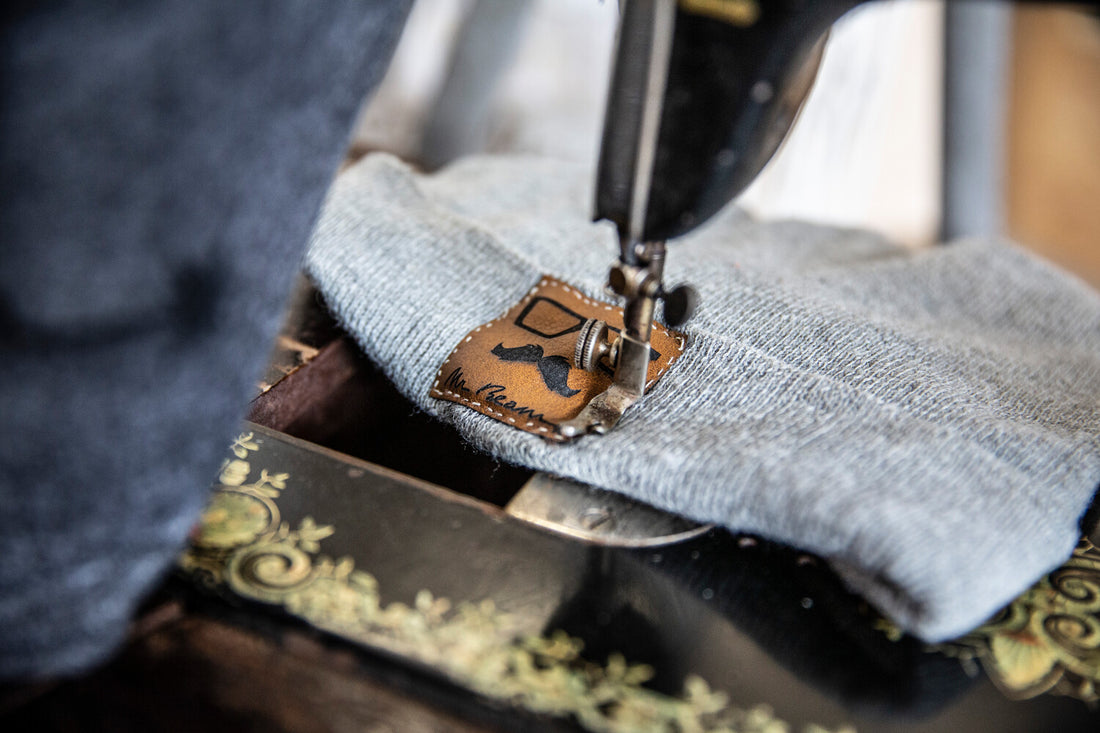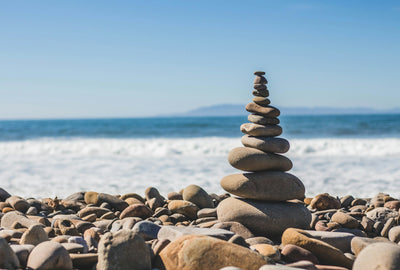In our latest Materialguide we accept that Material leather more precisely under the magnifying glass. Here you will learn exactly what's leather is for a material that features properties and leather species, as well as it is made. In addition, can be leather Also very well edit with our laser cutter.
What is leather?

Leather is a fascinating material. His use and processing are among the oldest craftsmanship activities and are inextricably linked to the history of humanity. In the era of the hunters and collectors, skins or skins of animals initially served primarily the protection against cold, moisture and wind. Caves drawings and other finds show that these "waste products" of the hunt inspired our stone-age ancestors soon for numerous uses. In this post, you will learn a lot of exciting over the material leather and its properties.
How is leather made?
Animal bones abrasives use the first modern people already 50,000 years ago to clean animal skins and thus prevent the decay. So-called Lissoirs produced from the ribs of red deer were used To make the robust material softer, smoother and water-resistant. For longer durability, the rubbing of the leather with grease and oil caused initially. From this first, even primitive preform of the preservation, more and more sophisticated refinement methods developed over time.
The most important step on the way from the hard, dried animal skin to the Smooth leather is the tanning. It serves to preserve the material that would decompose untreated and stabilizes it for further use. In addition, the tannins cause the protein threads, from which skin is a third, do not glue and cure, but to connect to a flexible, durable tissue.
Only by tanning, leather receives the properties that make it attractive for us
In the Europe of the Middle Ages, this developed Tanning of leather and skins to a separate craftsmanship. Until the 19th century, there were predominantly vegetable substances and urine for use. With progressing industrialization, the Techniques of leather production. Since the discovery of the chromium salts in 1858, the so-called chrome device is the most significant magnificent method. It is still used today. However, as it leaves a catastrophic ecological footprint, older techniques like plant clothing come to new honors now.
Which properties has leather?
Leather has several properties that have always been to one of the world's highest quality and most flexible materials in the world. Well treated and well maintained, it resists cold, moisture and, depending on the type and refinement, such as a "second", stable skin even protect against injury. Up to a degree, every leather species is supple, flexible and elastic. Accordingly, tanned and depending on the material thickness, leather also develops other properties. Thick leather, for example, may be hard, sturdy and tear-resistant and served in antiquity as base material for virtually impenetrable breastplate and shields. In general, tailored leather pieces can be brought into shape in a variety of ways and assemble, for example by tensioning and stretching techniques, with filigree or even robust seams as well as gluing.
The machining with magnifying substances gives leather also properties How to act antibacterial, better isolate than many other materials and at the same time breathable and water repellent. Last but not least, there are the aesthetic aspects of leather. Depending on the version, it comes noble and elegant, therefore, playful, solid or rustic.
Which types of leather are there?

To anticipate: to determine the number of leather species or leather varieties or even appreciate only approach, is simply impossible. It starts with all the animals on animals whose skin can be processed into leather leads over More than 300 industrial techniques used worldwide and ends with the diverse uses of this material. For clarity, each of the following paragraphs is dedicated to a type of leather, which owes its properties to a certain form of housing - that is, the type of coloration and the finish of the already tanned leather. There are special leather grades and their classic use in the further course of this post.
Smooth leather
Strictly speaking, Is "smooth leather" a generic term for every type of leather With a more or less smooth surface (in contrast to the rattle, see below). A smooth leather type is designated as covered, or surface pigmented, in which a water-repellent color and protective layer ensures a particularly insensitive surface.
Aniline leather
In the colloquial language, the Designation aniline leather established for a leather type with open poreswho has no surface protection. This type of leather is completely or partially dyed and dirty sensitive. Through the unprotected pores, water can penetrate into the leather and cause dark, non-removable stains.
Nappa leather
For the production of Nappa leather becomes only the soft top skin layer (The actual hair side) used. It comes both as a tailed smooth leather as well as an aniline leather in the trade and lets the structure of the skin surface detect.
Patent leather
Not without reason this works High-gloss, scar free leather style Almost always artificial: it is painted on the top or even covered with a mirror-smooth plastic film.
Latter
Similar to smooth leather General for every type of leather With a straight finish, Suede leather is a collective term for leather with more or less roughened surface.
Nubuck
To produce the velvety feel of nubuck leather, the top skin layer is slightly sanded. The result is an interesting structure created by the irregularities of the hair side, and a soft, warm grip.
Suede
In addition to nubuck leather is especially Soft and supple suede Or suède the most famous leather type with an outer surface. Even suede is only out of the upper skin layer, but it is turned the lower since and out for its production.
A word to suede
Tip: Use the word suede (at least in the specialty shop) not as a synonym. Correctly it is for a particularly soft, velvety leather style, which is manufactured from the coat of deer, deer, moose and representatives of the Hirsch family.
What does leather suitable for?

Real "leather domains" are the world of furniture and the world of clothing areas, so that comfort, good haptics and / or appealing appearance play an important role. The largest part of the Commercially available leather grades comes today from animals, which are bred for meat recovery. Accordingly, you will encounter the purchase of leather products predominantly beef and pork leather as well as the goat, lamb and calf leather applicable as a particularly high-quality.
- Cowhide: for robust shoes and bags and motorcycle clothes, but also as a cushion leather, for example for car and furniture;
- Pork: inexpensive leather clothing and accessories;
- Goat leather: a particularly soft and very thin leather species, usually shoes, gloves and pockets are made;
- Calfskin: Because of its solid, uniform structure, especially for fine but durable footwear, clothing, book invitation and typing folders.
- Lambskin: soft, lightweight, durable and often used as a material for high-priced coats, jackets, pants, clothes and skirts.
Rarely to be found - and are expensive - are Products made of leather grades of hunting wild or exotic breeding animals. Some examples:
- Traditional clothing is made from deerskin
- Ostrich leather Finds in the production of exclusive bags and hats.
The skins of crocodiles and beat Among other things to pockets and shoes processed.

How care is leather?
The famous "Krachlebernern" - the traditional leather pants of Bavarian guys - is one of the very few leather objects that look all the more likely to be worn and the more patina you treat them. Apart from this exception, Do not you come around a certain care effort?if you want to have a long pleasure in the respective good piece. After all, there is a simple rule of thumb when it comes to meaningful leather care:
The natural a leather part is, the faster it suffers from moisture and dirt. Every open-pored Leather species has the property to discolor and accept unsightly signs of use. Nubuck leather loves regular brushes, smooth leather with a treated surface, however, you can easily wipe out.
The ideal material for beautiful things

Leather is a wonderful material from which you can make smaller and larger objects with a little exercise and handicraft. The Production of trendy leather labels, for example, except a thin piece of leather - only requires a cutter that can be done precisely. And: ours Mr Beam Laser cutter is the perfect tool for implementing your designs in appealing engravings. You can use our leather blanks Laser machine Also perform.
You liked our blog articles? Then you should also give yourself our articles to others Laser materials look at how felt, acrylic, latex or slate. In our Mr Beam Blog we constantly provide you with new ones Encoder, Tutorials and inspiration.



